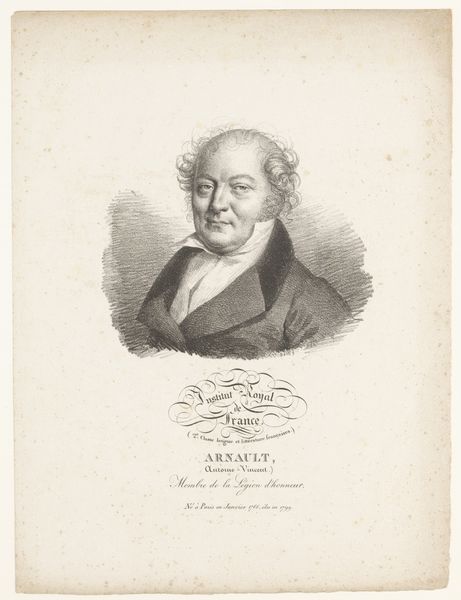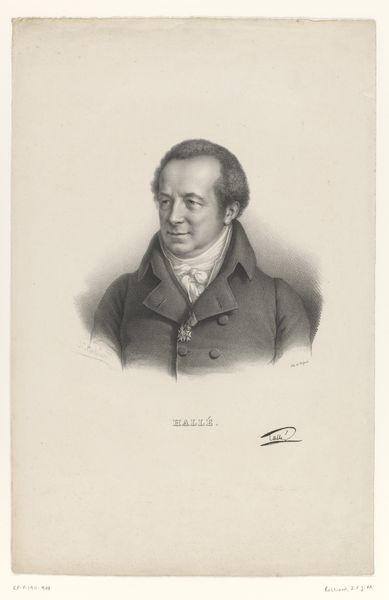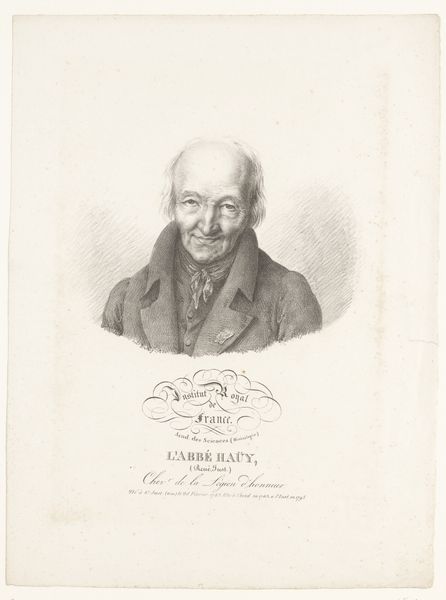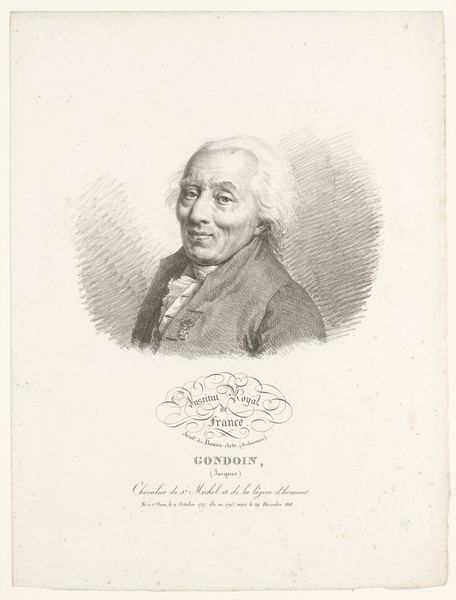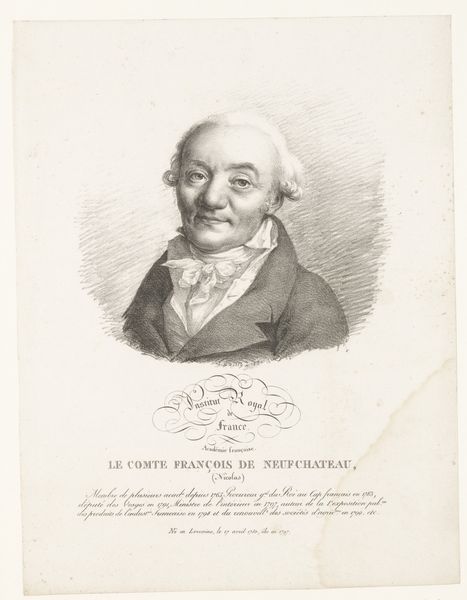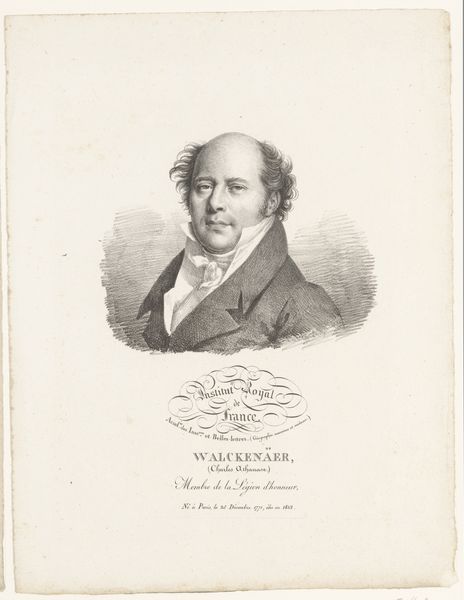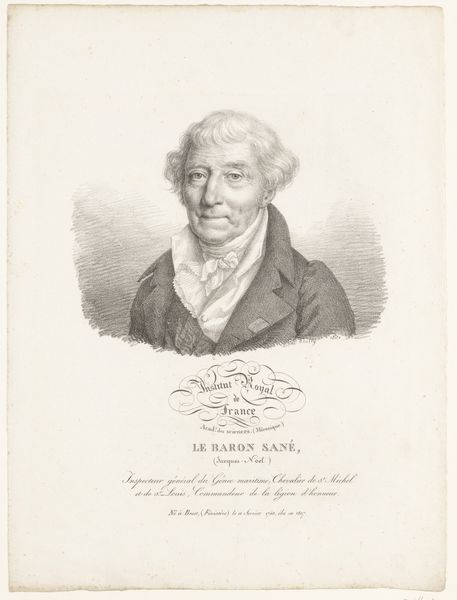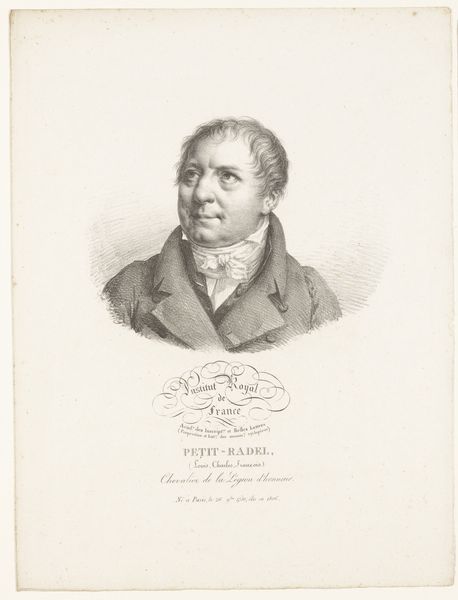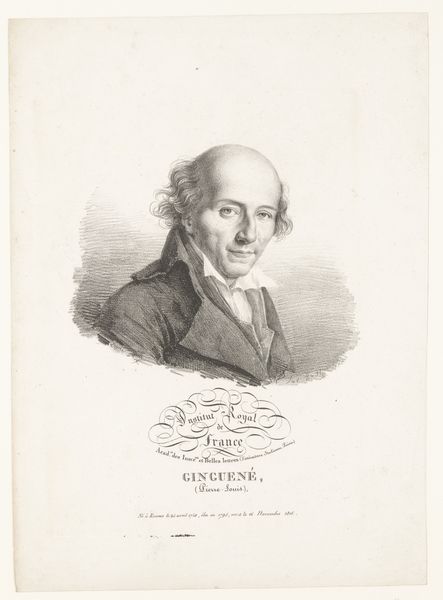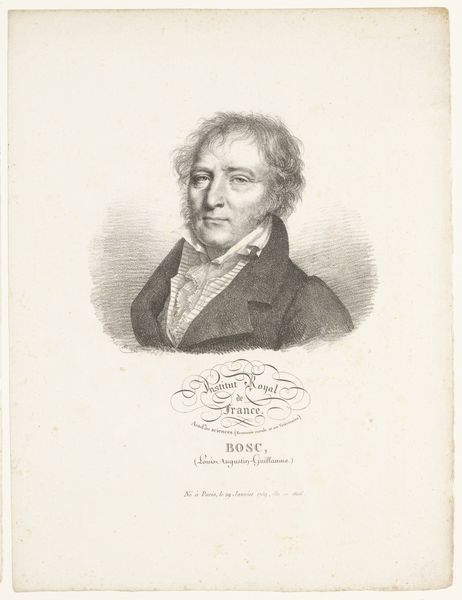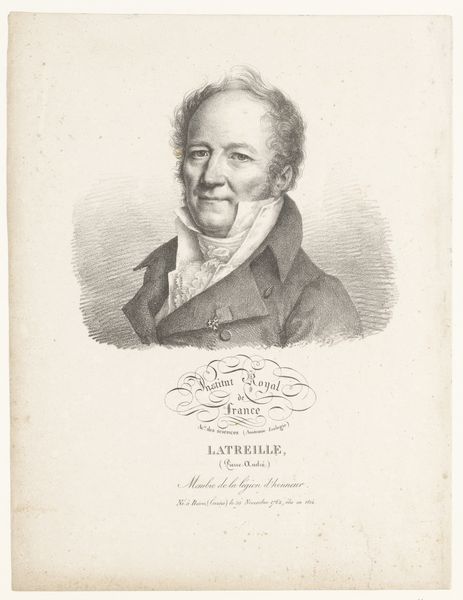
print, engraving
#
portrait
#
neoclacissism
# print
#
pencil drawing
#
academic-art
#
engraving
Dimensions: height 362 mm, width 269 mm
Copyright: Rijks Museum: Open Domain
Editor: So, here we have Julien-Léopold Boilly’s "Portrait of the Playwright Louis-Benoît Picard," from 1821. It's an engraving, which I find quite fascinating given its delicate nature. I’m curious, what strikes you most about the medium and method of its making in relation to the subject? Curator: Immediately, the meticulous process of engraving leaps out. Think about the labor involved in translating Picard's likeness onto a metal plate, carefully incising lines to create tone and form. This isn't a quick sketch; it’s a constructed image, where the engraver acts as a skilled artisan, mediating between the subject and the viewer. Does the reproductive nature of the print—the very ability to disseminate Picard's image widely—alter your perception of his celebrity? Editor: It does shift my perspective. The accessibility makes it feel almost… democratic. It’s no longer solely about an individual artistic rendering but a manufactured object for consumption. Does the social context of print production contribute to a re-evaluation of Boilly's work beyond pure artistry? Curator: Precisely. We might consider who was consuming these prints and how this portrait functioned within a broader visual culture. Was it a tool for solidifying Picard’s social standing or simply a commodity responding to public demand? The lines between high art and popular culture blur here. Do you feel the artist is elevating or merely reflecting existing social hierarchies? Editor: Perhaps both? Elevating him by immortalizing his image, but also reflecting his place in the cultural landscape. It certainly makes me consider the socio-economic implications of portraiture in that era. Curator: And how the material act of engraving, the deliberate choices made in its production, played a role in shaping that landscape. Editor: It's fascinating how analyzing the physical processes changes my interpretation of the artwork and makes it way more accessible, taking into consideration print accessibility and democratized art consumption in 19th century France. Thanks.
Comments
No comments
Be the first to comment and join the conversation on the ultimate creative platform.
